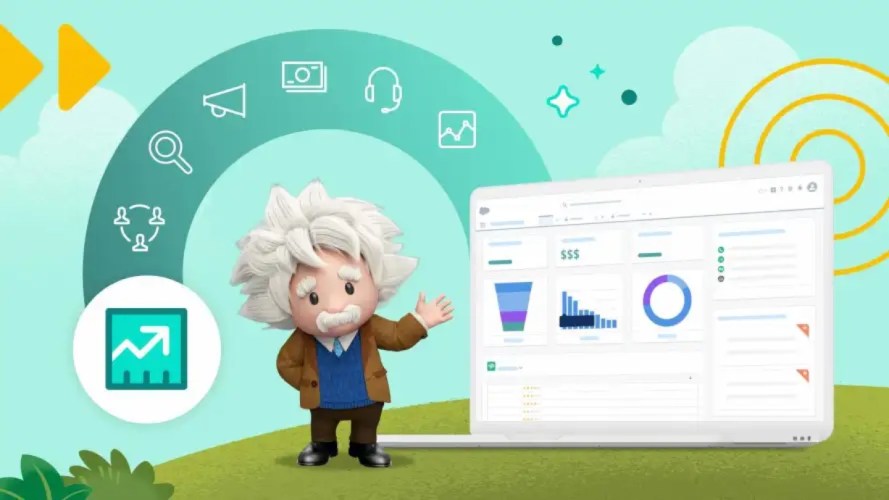In today’s competitive world, there’s no room for error. The ability to transform a simple enquiry into a profitable relationship defines success across all industries — including retail, e-commerce, wholesale, and more. Enter the vibrant world of lead management, where the convergence of strategy, technology, and human connection propels business forward.
Lead management is the unsung hero of your business, and the hidden powerhouse of your success, whether you’re the owner of that business, a manager, or an executive responsible for operations, logistics, and supply chain management. It’s the art and science of capturing, nurturing, and converting leads into loyal customers, enriching your bottom line and elevating customer satisfaction.
The landscape of success is evolving, and, whether you’re B2B or B2C, this comprehensive guide is your map to navigate it. Embark on this journey and discover how mastering lead management can be a foundation for achieving your goals with ease. From here on out, your leads are no longer just numbers — they’re the lifeblood of your enterprise, waiting for you to tap into their potential.
What is lead management?
Lead management is the heart and soul of any thriving business, acting as the bridge connecting potential customers to tangible sales. At its most basic level, lead management is the systematic process of tracking, engaging, and nurturing potential customers (leads) through various stages of the sales funnel, aiming to convert them into loyal customers.
This process breathes life into your marketing strategies, turning interest into action. But it’s a bit different for B2C and B2B brands, so let’s dive into the nuances.
B2B lead management — building professional relationships
In B2B scenarios, lead management centres around cultivating long-term professional relationships. It’s still about identifying and nurturing leads and figuring out how their needs align with your products or services. But B2B leads can be both individuals and businesses, making the decision-making process more intricate with multiple stakeholders involved. It requires a mix of strategic thinking, in-depth understanding, and tailored communication.
A common misstep for many B2B businesses is focusing solely on entire businesses as their leads. Remember, when engaging a potential customer, you’re connecting with a person. Everyone within a business has unique needs and values different features of what you’re presenting. So, when managing B2B leads, it’s crucial to address the business’s objectives and needs in terms of how your product or service can alleviate individual pain points.
B2C lead management — connecting with consumers
Conversely, B2C lead management hones in on individual consumers. It’s about tapping into their desires, interests, and challenges, then showcasing your products or services as the ideal solution. This process tends to be faster and more direct, requiring a sharp awareness of consumer trends and behaviours.
A potential pitfall is that some B2C businesses believe lead management isn’t relevant to them. They might not see the value in nurturing prospective customers, overlooking that it’s equally crucial as with B2B leads.
Bringing it together — lead management as a symphony
Picture lead management as a symphony, with each lead being a distinct note. Your role? Ensure they meld into a harmonious tune. Whether you’re working with businesses or individual consumers, the basics stay the same: identify, engage, and convert. It’s all about nailing the right rhythm for your unique audience, striking a chord that sticks, and fostering that relationship until it culminates in a sale.
For B2B, it’s a refined dance requiring patience and skill, whereas B2C involves a more immediate and fervent connection.
The importance of lead management
Lead management isn’t just a process; it’s the lifeblood of your business. It’s the bridge connecting your products or services to the people who need them most. You’re not just selling; you’re solving problems, fulfilling needs, and making lives better. In an era where customers are seeking personalisation and value, lead management helps you meet them where they are, and there are a wide range of benefits you can experience if you get on board with lead management.
The benefits of lead management
Embracing lead management is like setting your business’s GPS to ‘success’. With clear direction and understanding, you can steer your efforts to where they matter most. Here are the vital advantages you can experience:
- Efficiency and accuracy: With proper lead management, your efforts are focused, targeted, and intentional. No more casting a wide net and hoping for the best. You know who you’re reaching, why, and how. And you know how you’re going to convert them into paying customers as efficiently as possible.
- Enhanced customer experience: By understanding and tracking leads, you can tailor your interactions, making them more relevant and engaging. It’s about making customers feel seen and valued, not just another number in the database.
- Increased sales and conversions: Lead management fine-tunes your sales funnel. By qualifying, distributing, and nurturing leads, you’re moving them closer to conversion, turning interest into action more often and more quickly.
- Data-driven insights: Lead management offers valuable insights into customer behaviour and preferences. It’s a window into what works and what doesn’t, guiding your future strategies.
- Alignment between sales and marketing: Bridging the gap between marketing and sales is a challenge in many organisations. Lead management facilitates this collaboration, ensuring seamless communication and alignment.
The risks associated with neglecting lead management
Without lead management, you’ll be navigating without a compass. Leads can fall through the cracks, opportunities may be missed, leads convert slowly, and resources might be wasted on unqualified prospects. Here are the most painful problems you risk if you don’t appropriately manage your leads:
- Lost opportunities: Unmanaged leads can quickly become missed opportunities. Without tracking and nurturing, you can lose the connection and potential revenue slips away.
- Inefficient resource allocation: Without qualification and distribution, your team’s efforts might be spent on leads that never had the potential to convert, wasting time and energy.
- Inconsistent customer experience: Without a coordinated approach, customer interactions can become disjointed and inconsistent, damaging your brand reputation.
Best practices for lead management
The road to converting leads into loyal customers is paved with intention, insight, and innovation. It’s about more than just following steps; it’s about embodying principles that resonate with your customers. Here are some best practices to guide you on your journey.
1. Understanding your leads — know who they are
- Segmentation: Break down your leads into categories based on their needs, preferences, or behaviours. Build comprehensive audience personas.
- Personalisation: Speak to them as individuals, not as a generic audience. (Personas make this much easier to do.) Tailor your interactions and offers to match their unique interests.
- Empathy: Treat leads as human beings, understanding their concerns and motivations.
2. Nurturing and building relationships — create connections that count
- Timely engagement: Respond to leads promptly. Your attention shows you care. It also stops others beating you to the sale.
- Consistent communication: Keep the conversation going, providing relevant information and updates without overwhelming your leads.
- Provide value: Offer resources, insights, or exclusive deals that genuinely help them. It’s about giving, not just selling. And even when you are actively trying to sell, ensure your communications provide value beyond just the sale.
3. Ensuring sales and marketing collaborate — ageing sets and meting for unified goals
- Shared goals and metrics: Ensure both teams understand what success looks like and how to measure it.
- Regular communication: Foster open dialogue between sales and marketing, keeping everyone on the same page.
- Unified strategies: Implement processes that bridge the gap between marketing’s lead generation and sales’ conversion efforts.
4. Using technology wisely — leverage tools to amplify your efforts
- Automation: Use technology to automate repetitive tasks, allowing your team to focus on meaningful engagement. You can also automate strategic touch points, so leads get what they need as soon as possible.
- Analytics: Harness data to gain insights into lead behaviour and campaign effectiveness.
- Integration: Combine different tools to create a cohesive lead management system. For example, ensure your CRM software, email marketing platforms, and social media scheduling tools all integrate, so information can flow seamlessly between them all.
5. Evaluating and adapting — strive for continuous growth and improvement
- Regular monitoring: Keep an eye on key performance indicators (and not vanity metrics) to understand what’s working and what isn’t.
- Feedback loop: Encourage feedback from both team members and customers to continually refine your approach.
- Flexibility: Success isn’t static, so be ready to adapt to changing market conditions, customer needs, or new insights.
The lead management process — your roadmap to success
While every business will have a unique sales funnel and customer journey, there’s a basic lead management process every business can use to turn a curious visitor into a loyal customer. But the lead management process isn’t just a sequence of actions. It’s a well-defined pathway guiding leads from awareness to conversion — a structured series of actions and strategies designed to identify potential customers, build a relationship with them, and guide them through the decision-making process. Here’s what that process looks like.
Lead persona development — understanding your audience
Many people start the lead management process with lead generation and capture. But before diving into the lead generation part of any lead management strategy, it’s crucial to have a solid picture of who you’re trying to reach. This is where lead persona development comes into play.
What are lead personas?
Lead personas are fictional representations of your ideal customers. They’re based on real data and insights about your existing customers, as well as market research. Crafting lead personas helps you understand your audience’s pain points, motivations, preferences, and behaviours. This understanding empowers you to tailor your lead generation efforts to resonate with their specific needs.
Why lead personas are essential
Creating lead personas provides a foundation for effective lead generation. When you know who you’re talking to, you can speak directly to their needs and aspirations. This targeted approach increases the likelihood you’ll effectively capture your ideal customers’ interest and keep them engaged throughout their journey with your brand.
When to develop lead personas
By having a deep understanding of your target audience, you’ll be better equipped to create content and experiences that cater to their preferences at every stage of the funnel. As a result, lead personas should be developed early in your marketing strategy, before you begin any marketing campaigns. However, that doesn’t mean they have to be set in stone. As you gather data on the effectiveness of your lead management process, you can tweak your lead personas to ensure they’re as accurate as possible and also so they keep pace with changing market conditions.
How to develop lead personas
Crafting accurate lead personas requires research and analysis. Here’s a simple process to guide you:
- Collect data: Start by gathering data from your existing customers. Look at demographics, job titles, pain points, goals, and behaviours. (If you’re a new business, skip straight to step 2.)
- Market research: Extend your understanding by researching broader market trends, industry reports, and competitor insights.
- Identify patterns: Analyse the collected data to identify commonalities and trends among your ideal customers.
- Create personas: Develop fictional characters that represent different segments of your audience. Give them names, backgrounds, and detailed characteristics.
Applying lead personas to lead generation
Once you have your lead personas in place, tailor your lead generation strategies accordingly. Craft content that addresses their pain points, provides solutions to their challenges, showcases how your products or services align with their goals, and measures the success of your strategies against each persona. By aligning your messaging with the interests of your lead personas, you’ll increase the chances of capturing their attention and building lasting connections.
Remember, lead personas are not set in stone. Regularly update and refine them as you gather more insights and adapt to changing market dynamics. This ongoing process ensures that your lead generation efforts remain relevant and effective.
Lead persona development is the cornerstone of successful lead generation. By understanding your audience on a deeper level, you’re better positioned to ignite interest, establish connections, and nurture leads through the entire funnel.
Lead generation — sparking the flame
Before you can manage leads, you’ve got to have some leads, right? This is where lead generation kicks in.
What is lead generation?
Lead generation is the art and science of sparking interest in your business, ideas, products, or services. Your aim here is to catch the eye of potential customers and ensure you have a way of engaging with them so you can continue the conversation on your terms and prevent them from forgetting about you.
Why lead generation is important
No leads, no growth. It’s as simple as that. A strong lead generation strategy fills the funnel and sets the stage for conversions. However, generating interest in your brand isn’t the only thing you need to do at this stage. If you don’t capture contact details, you’ll have to rely on leads choosing to come back to you, or worse, stumbling upon you again. So, it’s also important at the lead generation stage that you have a way of both generating and capturing leads.
When to generate and capture leads
Leads can be generated at any part of the sales funnel. You can turn paying customers into a lead again with the hopes of generating additional sales from them. You can even generate leads before they’ve become properly aware of a pain point that you can resolve. But you don’t have to start generating leads that early in the sales process. Do what works for your business, what you’re offering, and your target audience.
The important thing to understand here is that most people don’t like handing over their personal contact details, so you have to give them a good reason to do so. Only ask your audience to subscribe to, or follow, your channel or sign up for your email newsletter after you’ve given them something of value.
How to generate and capture leads
At the most basic level, the most efficient way to generate leads is to engage your audience with valuable content that answers their burning questions. To get started, create a comprehensive content strategy that focuses on answering questions your potential customers might have at each stage of your customer journey.
There are a wide range of tools and techniques you could use to generate leads, including:
- Advertisements
- SEO
- Organic social media marketing
- Referral marketing
- Influencer marketing
- Cold email outreach
For example, you might consider implementing your strategy by consistently creating SEO-friendly content (e.g. blog posts and YouTube videos), engaging actively on social media platforms, or creating ad campaigns targeting your desired audience. You might also consider regularly hosting webinars, workshops, or even local community events to foster personal interactions. You might also have the option of collaborating with influencers or other businesses to increase your reach and attract a wider audience. Remember, this stage is about getting in front of your audience with content that resonates with their needs.
Once you’ve captured the interest of your ideal audience, you can encourage them to share their contact details with you. There are lots of way to accomplish this, but to get you started, here’s a simple three-step process you can follow:
- Design user-friendly landing pages that clearly convey the benefits of subscribing or sharing information and which contain compelling calls to action to encourage leads to convert
- Offer high-quality resources your audience will value, like in-depth guides, whitepapers, or exclusive access to certain sections of your website
- A/B test different approaches to determine what resonates best with your audience
Many of the techniques we’ve outlined here are part of content marketing. Many people believe that content marketing is a great way to generate leads for B2C businesses but that B2B businesses must rely on outbound marketing. This simply isn’t true. 88% of B2B marketers use content marketing to generate leads. The key to effective lead generation, no matter what kind of business you have, is to cast a wide net, offering value and solutions to potential leads, and encouraging them to learn more about what you offer.
Lead qualification and segmentation — getting to know your leads
The lead management process doesn’t stop at generating and capturing leads; it’s equally crucial to understand and categorise them effectively. Lead qualification and segmentation are vital in this regard, helping you identify the right leads to pursue and how best to engage them. This includes distinguishing between marketing-qualified leads (MQL) and sales-qualified leads (SQL).
What is lead qualification?
Lead qualification is the process of assessing and ranking leads based on their likelihood of becoming a customer. This involves determining whether a lead fits your ideal customer profile and has genuine interest or need in your product or service. Two common classifications in this stage are:
- MQL (marketing-qualified leads): These are leads who’ve shown interest in and engaged with your marketing efforts but might not yet be ready to buy
- SQL (sales-qualified leads): These are leads who’ve been further vetted and are considered ready for direct sales engagement and/or messaging
What is lead segmentation?
Lead segmentation is about grouping leads into specific categories based on shared characteristics or behaviours. This can include demographics, psychographics, purchasing behaviour, or even the stage of the buying process. Often, marketers will segment leads according to their lead personas, but that’s not the only way to do it. And sometimes, marketing teams will segment by persona and then create sub-segments.
Why lead qualification and segmentation are essential
Knowing which leads to pursue (qualification) and how to approach them (segmentation) streamlines your marketing and sales efforts. It helps you focus on the leads that are more likely to convert, thereby improving efficiency and return on investment (ROI). For example, studies have shown that segmenting email lists can generate 760% more revenue.
When to qualify and segment leads
Qualification and segmentation should be an ongoing part of your lead management process starting from the moment you capture them. As you gather more information about leads, continually reassess and refine these categories to ensure they align with current market conditions and your evolving business goals.
How to qualify and segment leads
Qualifying and segmenting leads is a nuanced process that involves understanding the lead’s level of interest, readiness to buy, and how they align with your ideal customer profile. There are many ways to qualify and segment leads. Here are a few you may find useful.
Qualifying leads with BANT
The BANT framework is a popular method for qualifying leads, particularly in the B2B sector. It considers:
- Budget: Does the lead have the necessary budget for your product or service?
- Authority: Does the lead have the decision-making authority to make a purchase?
- Need: Does the lead have a real need for what you’re offering?
- Timing: Is the lead ready to buy now, or is there a more opportune time in the future?
These factors together help identify how prepared a lead is to make a purchase.
Segmenting leads as MQLs and SQLs
Once you’ve qualified your leads using BANT or a similar framework, you can segment them into MQL and SQL categories by looking at the following criteria.
MQL
MQLs often meet some, but not all, BANT criteria. Ask yourself the following questions:
- Interest level: Has the lead engaged with marketing content, such as downloading a whitepaper, signing up for a newsletter, or attending a webinar?
- Fit with ideal customer profile: Does the lead’s demographics, industry, or company size match your target audience?
- Readiness for sales: Is the lead showing curiosity but still in the information-gathering phase, requiring more nurturing through targeted marketing efforts?
SQL
SQLs have generally met all the BANT criteria and are considered ready for a more direct sales approach. Ask yourself the following questions:
- Clear purchase intent: Has the lead requested a product demo, asked for pricing information, or initiated contact with a sales representative?
- Sales interaction: Has there been a meaningful interaction with the sales team, such as a discovery call or meeting, indicating readiness to buy?
- Past purchasing behaviour: Has the lead made similar purchases in the past, indicating a clear pattern of buying behaviour?
Tools and techniques for qualification and segmentation
Those criteria can serve as a foundation for distinguishing between MQLs and SQLs, but businesses often adapt and refine these based on their unique context, sales cycles, products, or services. Marketing and sales teams typically work together to define MQL and SQL criteria, ensuring alignment across the entire lead management process. Tools like lead scoring and behaviour tracking can further support this differentiation, enabling a more nuanced and responsive approach to engaging leads at various stages of readiness. Many businesses also employ marketing automation and customer relationship management (CRM) tools to support lead qualification and segmentation.
Here are some ideas for how you might get started:
- Lead scoring: Assigning numerical values to leads based on how well they match your ideal customer profile. (We’ll talk more about this soon.) This automated process can quickly help distinguish between MQLs and SQLs.
- Behaviour tracking: Monitoring how leads interact with your website and content to determine their level of interest and segment them accordingly.
- Regular reviews: Continually reassessing lead qualification and segmentation criteria to ensure alignment with evolving market conditions and business goals.
Applying lead qualification and segmentation to your strategy
Once you’ve identified MQLs and SQLs, and segmented your leads, you can tailor your marketing strategy and sales strategy to match each lead’s progress through your sales funnel. For example, MQLs might benefit from nurturing campaigns that offer educational content, while SQLs might respond well to product demonstrations or special offers. By understanding and applying these concepts, you’ll be setting yourself up for more focused, effective, and successful lead management.
Remember, lead qualification and segmentation aren’t static processes. Keep them fluid, revisiting and refining as needed to ensure you’re always targeting the right leads in the right way. It’s not just about categorising leads; it’s about understanding them deeply, so you can build relationships and drive conversions. This is the essence of intelligent lead management.
Lead scoring — grading the potential
We mentioned lead scoring as a useful tool to use when qualifying and segmenting leads, so let’s dive a little deeper into how you can use lead scoring to level-up your lead management process.
What is lead scoring?
Lead scoring is the process of assigning values to leads based on various criteria, helping you identify which leads are most likely to convert into customers. It’s like grading your leads, making it easier to focus your attention where it’s most likely to bear fruit.
The lead scoring methodology focuses on ranking prospects against a scale that represents the perceived value each lead represents to the organisation. This ranking is used to determine priorities in the sales pipeline, allowing both marketing and sales teams to identify the most promising leads and focus their efforts accordingly.
Why lead scoring is important
Lead scoring provides several key benefits:
- Efficiency: By focusing on high-value leads, your sales team can invest time and resources where they’re most likely to see returns.
- Alignment between sales and marketing: A shared lead scoring system helps bridge the gap between marketing and sales, fostering collaboration and ensuring that everyone is targeting the same goals.
- Better conversion rates: Understanding the value of each lead enables more personalised engagement, which often translates into higher conversion rates.
- Insight into marketing efforts: Analysing which leads score higher can provide valuable insights into what marketing strategies are working best.
When to start scoring leads
Lead scoring can be implemented at various stages of the lead management process but is most effective when you have enough data to create meaningful scores. Implementing lead scoring too early may lead to inaccurate scoring, while waiting too long might mean you miss opportunities. It’s typically introduced:
- After defining MQL and SQL Criteria: Once you’ve distinguished between MQLs and SQLs, lead scoring can fine-tune this segmentation.
- When sales and marketing are aligned: Lead scoring requires collaboration, so it’s best implemented when there’s agreement between sales and marketing on definitions and goals.
- During scale-up phases: If your business is growing and the volume of leads is increasing, lead scoring becomes a crucial tool for managing the flow efficiently.
How to score your leads
Creating an effective lead scoring model involves several key steps:
- Identify key factors: Determine what factors indicate a lead’s potential value. This might include demographic information, engagement level, purchase history, and alignment with the BANT criteria.
- Assign weights: Give different weights to various factors depending on their importance. For example, a request for pricing might be weighted more heavily than a newsletter sign-up.
- Develop a scoring scale: Create a scale that represents different levels of lead readiness, from cold leads to those that are sales-ready.
- Collaborate with sales: Ensure the scoring model aligns with sales’ perception of lead value to foster a unified approach.
- Regularly review and update: Lead scoring models need to adapt to changing market conditions, new products, or shifts in strategy. Regular reviews help keep the model relevant.
Lead scoring is not a set-and-forget tool; it requires ongoing attention and alignment with broader business strategies. By integrating lead scoring into your lead management process, you’re adding a powerful tool that sharpens your focus, aligns efforts, and drives more successful conversions. It turns the art of sales into a more exact science, enabling better decision-making and resource allocation.
Lead nurturing — the art of building relationships
Once you’ve ignited interest and generated leads, the journey’s far from over. Lead nurturing is all about developing and maintaining a relationship with potential customers (MQLs), even if they’re not ready to buy just yet. Through a well-defined content strategy and targeted communications, lead nurturing aims to educate, engage, and build trust with leads, keeping your brand top of mind as they move through the decision-making process. This delicate nurturing helps your leads blossom into loyal customers when they’re ready.
What is lead nurturing?
Lead nurturing is the process of engaging potential customers by providing relevant information, insights, and interactions at each stage of their buying journey. It’s about building relationships, trust, and awareness through consistent, valuable touchpoints, often facilitated by a well-defined content strategy.
Why lead nurturing is important
Lead nurturing is essential for keeping potential customers engaged and interested in your brand, even if they’re not yet ready to purchase. By consistently offering value and showing your understanding of their needs, you can guide leads through the decision-making process, enhancing their connection with your brand and increasing the likelihood they’ll choose you when they’re ready.
If you don’t nurture your leads, someone else will. And by the time those leads are ready to buy, they’ll have forgotten you in favour of the brand that did nurture them.
When to nurture leads
Nurturing should begin as soon as a lead is identified and then it should continue throughout their journey with your brand. It’s not just a one-time interaction but a continuous effort that aligns with their evolving needs and interests.
How to nurture leads
Lead nurturing involves several key strategies, including the implementation of a well-defined content strategy. The way you nurture leads will be unique to your business and audience, but here are some general guidelines.
- Craft a content strategy: Develop a content plan that resonates with your lead personas, considering their unique needs and interests. There are so many reasons to create an integrated content strategy, but one of the most important is that it will tell you what content to produce to enable you to meet your marketing goals. There are several elements that make for an effective content strategy:
- Content mapping: Plan content for different stages of the journey, such as educational webinars, interactive quizzes, or case studies.
- Choose the right channels: Engage leads where they spend time, like social media, email, or webinars.
- Measure success: Regularly review and adjust your strategy, tracking engagement and conversion metrics.
- Personalise communication: Tailor your messages, offers, and content to individual needs and preferences.
- Use marketing automation: Automation tools can help you deliver personalised content at scale and track interactions. It can even help you tailor future communications based on the behaviour of each individual lead.
- Foster human connections: While automation can enhance efficiency, personal interactions like phone calls, face-to-face meetings, or personalised emails can deepen the connection.
By crafting a strong content strategy and employing a mix of personal and automated touchpoints, lead nurturing builds lasting relationships, guiding leads towards becoming loyal customers. It’s a strategic and thoughtful approach that elevates your lead management process, nurturing interest into genuine connections, and eventual sales.
Lead nurturing content examples
The range of content that can be used to effectively and efficiently nurture leads is ever expanding. However, here are some tried and trusted types of content you might test out with your audience:
- Educational content — Ebooks, webinars, tutorials, podcasts, workshops, and online courses that provide valuable insights
- Inspirational content — Motivational quotes, success stories, or visionary content that aligns with your brand’s values and mission
- Engaging content — Interactive quizzes, polls, social media messages, gamified experiences, or challenges that foster interaction
- Trust-building content — Case studies, testimonials, independent reviews, thought leadership articles, industry insights, or collaboration with influencers showcasing your credibility
- Conversion-focused content — Product guides, demos, exclusive offers, free trials, personalised recommendations, or targeted ad campaigns designed to drive sales
- Community-focused content — Forums, community discussions, local events, or user-generated content encouraging collaboration and connection
- Story-driven content — Storytelling through video series, behind-the-scenes looks, or customer success stories to create emotional connections
- Supportive content — FAQ sections, live chat support, guided tours, or AI-driven assistance to provide immediate help and answers
By experimenting with these diverse content types, you can discover what resonates most with your audience and refine your lead nurturing strategies accordingly. Remember, it’s all about meeting leads where they are, offering value, building trust, and guiding them towards a deeper relationship with your brand.
Lead distribution — getting the right leads to the right people
After nurturing your leads and once you’ve identified them as sales-qualified leads, the next pivotal step in the lead management process is lead distribution. This stage is all about efficiently allocating leads to the right members within your team, ensuring they’re handled effectively to maximise conversions.
What is lead distribution?
Lead distribution is the process of assigning leads to specific sales reps or teams within your organisation based on specific criteria, such as geographical location, product interest, lead score, or any other relevant factors. The aim here is to match the right lead with the right member of your team. The right team member being someone who has the expertise and experience to guide the lead through the buying journey until they become a paying customer.
Why lead distribution is vital
Proper lead distribution ensures your leads are followed up with by the most suitable person, resulting in a more personalised and effective interaction. If leads are handled by individuals who understand their particular needs and pain points, they’re more likely to convert into customers. Lead distribution is thus a cornerstone in increasing conversion rates and driving revenue growth.
If leads aren’t distributed effectively, conversion rates suffer. If they’re not distributed at all, leads may fall through the cracks with the result that many sales opportunities can be wasted and your reputation among your audience can be tarnished by the view that you’re unresponsive and offer poor customer service.
When to distribute leads
Timing is key in lead distribution. The sooner a lead is contacted after showing interest, the higher the chance of converting that lead into a sale. Therefore, it’s important to distribute leads as quickly as possible after they’ve been generated and qualified as an SQL. This requires having a robust lead distribution system in place, which can operate in real time or as close to it as possible.
How to distribute leads
Lead distribution can be handled manually or through automation. Here are some general guidelines to get you started:
- Define criteria: Establish the rules for distributing leads based on geography, industry, product interest, lead score, etc.
- Choose a distribution method: Decide whether you’ll manually distribute leads or use automation tools. Automation can streamline the process and ensure timely distribution. It also means leads won’t be missed due to human error.
- Monitor performance: Keep track of how different sales reps or teams handle their leads. Adjust distribution strategies based on performance, ensuring leads are always matched with those who can best serve them.
- Integrate with other systems: Make sure your lead distribution system integrates with your CRM and other essential tools, so all relevant information is shared and accessible.
The impact of proper lead distribution on sales
Well-executed lead distribution is a game-changer for sales efficiency. By ensuring leads are matched with the most suitable sales reps, you foster a connection that’s more likely to resonate with the lead’s specific needs and interests. It reduces response time, leading to quicker conversions, and ensures that your sales efforts are focused on the most promising opportunities. In a competitive market, lead distribution can be what sets your business apart.
Remember, lead distribution isn’t a one-size-fits-all strategy. It requires careful planning, regular monitoring, and continuous refinement. By aligning your lead distribution strategy with the overall goals of your lead management process, you’re not just handing out leads; you’re building bridges to potential customers, ensuring a cohesive and personalised journey from interest to conversion. It’s an essential step in turning potential leads into satisfied customers and growth for your business.
Lead conversion optimisation — turning interest into action
Once you’ve engaged potential customers and distributed leads appropriately, the next step is focusing on converting those leads into paying customers. This stage, known as lead conversion optimisation, plays a crucial role in ensuring all previous efforts in attracting and nurturing leads are translated into tangible results.
What is lead conversion optimisation?
Lead conversion optimisation is the process of increasing the percentage of leads that take a desired action or become customers. It involves identifying the barriers that might be stopping leads from converting and making strategic changes to remove those barriers. This might include enhancing landing pages, improving calls to action, or tailoring content to speak directly to individual pain points.
Why lead conversion optimisation is crucial
Optimising lead conversion isn’t just about getting more sales. It’s about understanding your leads better and providing them with exactly what they need to make a decision. It helps ensure your marketing efforts are effective and that you’re delivering a seamless and appealing buyer’s journey. Simply put, higher conversion rates mean more customers, more revenue, and a greater return on investment.
When to optimise lead conversions
Lead conversion optimisation should be an ongoing process, embedded throughout the sales funnel. It starts as soon as a visitor becomes a lead and continues through every stage until conversion. Regularly analysing and tweaking your conversion strategy ensures you’re continually improving and adapting to the needs of your audience.
How to optimise lead conversions
Optimising lead conversions is both an art and a science. Here’s a process that’s proven effective for millions of businesses:
- Analyse existing data: Understand where your leads are coming from and what motivates them. Identify where they drop off in the sales funnel.
- Set clear goals: Define what conversion means for your business at every stage of the sales funnel, whether it’s making a purchase, signing up for a newsletter, or another specific action. Then set goals for your desired conversion rate at each stage.
- Test and refine: Use A/B testing to explore various approaches and identify what resonates best with your audience.
- Enhance your user experience: Make sure your website and landing pages are user-friendly and provide clear and compelling calls to action. A poor user experience is often a cause of suboptimal conversion rates. In fact, improving a website’s user experience can increase conversion rates by 200%.
- Personalise where possible: Use the insights gained from your lead personas to tailor content and offers to individual preferences and needs.
- Measure and adjust: Regularly review your conversion rates and other key metrics to identify areas for improvement.
The ripple effect of lead conversion optimisation
The impact of well-executed lead conversion optimisation stretches far beyond the immediate sale. It builds trust and satisfaction, turning customers into loyal advocates who may refer others to your business. It helps ensure your marketing efforts aren’t just attracting attention but are forging connections that result in growth and long-term success.
Keep in mind, there’s no ‘magic formula’ for lead conversion optimisation. It requires continuous effort, deep understanding of your audience, and a willingness to adapt and innovate. By putting the needs and interests of your leads at the forefront, you pave the way for meaningful engagements and lasting customer relationships. Lead conversion optimisation isn’t just a stage in the process; it’s the heart of turning interest into fruitful action for both your customers and your business.
Lead lifecycle analysis — tracking the journey to success
Understanding the lifecycle of your leads is essential for crafting an effective marketing strategy. Lead lifecycle analysis involves tracking leads from initial interest through to conversion and beyond, enabling you to make informed decisions, optimise your marketing efforts, and forge lasting connections with your customers.
What is lead lifecycle analysis?
Lead lifecycle analysis is the examination of how leads interact with your business throughout their entire journey. It covers everything from the first point of contact to the eventual conversion, and even further to repeat purchases and loyalty. By analysing this lifecycle, you can identify key touchpoints, recognise patterns, and spot opportunities for improvement.
Why lead lifecycle analysis is valuable
Analysing the lifecycle of your leads provides valuable insights into what works and what doesn’t in your marketing strategy. It helps you understand how leads move through the funnel, where they might be dropping off, and what factors influence their decisions. This analysis supports informed decision-making and continuous refinement of your marketing and sales efforts.
When to conduct lead lifecycle analysis
Lead lifecycle analysis is not a one-off task. It’s an ongoing process that should be integrated into your regular marketing and sales activities. By continually monitoring and analysing the lead lifecycle, you’ll be able to adapt to changing needs and trends, ensuring your strategies remain relevant and effective.
How to perform lead lifecycle analysis
The process of performing lead lifecycle analysis can be broken down into these steps:
- Identify stages: Outline the stages of your lead lifecycle, such as awareness, consideration, decision, conversion, retention, and advocacy.
- Collect data: Gather data from various sources like CRM systems, analytics tools, customer feedback, and sales records.
- Analyse patterns: Look for trends, bottlenecks, or common pathways that leads take through your sales funnel.
- Evaluate performance: Assess how different strategies and touchpoints impact lead progression and conversion.
- Implement changes: Based on your findings, make necessary adjustments to your marketing and sales strategies.
- Monitor and repeat: Continuously monitor the effects of changes and repeat the analysis to ensure ongoing optimisation.
Embracing the insights from lead lifecycle analysis
Lead lifecycle analysis isn’t just a set of numbers or a report full of statistics. It’s a dynamic and insightful tool that offers a window into the hearts and minds of your leads. By understanding where they come from, what engages them, and what motivates them to convert, you gain the power to create more personalised and resonant experiences.
Remember, leads are not merely data points; they are people with individual needs, preferences, and motivations.



Remember, leads are not merely data points; they are people with individual needs, preferences, and motivations. Lead lifecycle analysis helps you see beyond the metrics and connect with your audience in a way that builds trust and drives success. It’s an essential tool for any marketer looking to not only grow their business but also create meaningful and lasting relationships with their customers.
Tracking and adjusting — the compass of your lead strategy
In the dynamic landscape of marketing, tracking and adjusting your lead management process and activities is akin to navigating with a compass. It ensures you’re on the right path, identifies when corrections are needed, and fosters a resilient and responsive marketing strategy.
What is lead tracking and adjusting?
‘Tracking and adjusting’ refers to the continuous monitoring of your lead management activities and the act of making necessary changes to align your efforts with your goals. It involves keeping an eye on key performance indicators (KPIs), analysing results, and implementing adjustments to strategies and tactics.
Why tracking and adjusting is vital
If you don’t track what your leads are doing, you’re navigating without a map. And if you never adjust your efforts, you’ll be ignoring the signs that tell you a change in direction is needed. Together, tracking and adjusting enable a proactive and agile approach to lead management, ensuring you’re using resources effectively, and seizing opportunities promptly.
When to track and adjust
Lead tracking and strategy adjustment isn’t confined to a specific stage or time. It’s an ongoing process intertwined with all aspects of lead management. Regular monitoring helps catch issues early, while consistent adjustments ensure strategies are fine-tuned to current market conditions and customer needs.
How to implement tracking and adjusting
- Define metrics: Determine the metrics that align with your objectives, such as conversion rates, engagement levels, or return on investment (ROI).
- Monitor continuously: Use analytics tools to keep an eye on these metrics, and regularly review progress toward your goals.
- Analyse trends: Look for patterns, anomalies, or changes in performance that might indicate underlying issues or opportunities.
- Make adjustments: Implement changes based on your analysis. This could mean tweaking a marketing campaign, altering content, or shifting resources to different channels.
- Evaluate impact: Assess the effects of the adjustments to understand their impact and learn for future iterations.
- Keep the cycle going: Continue this process of tracking, analysing, adjusting, and evaluating to maintain alignment with your objectives.
Leveraging lead tracking and strategy adjustment for success
Tracking and adjusting is not merely a task to be ticked off; it’s a philosophy to be embraced. It encourages a culture of curiosity, learning, and adaptation that can propel your lead management to new heights.
Remember, the market is always evolving, and so are your customers’ needs and behaviours. Embracing a mindset of continuous tracking and adjustment ensures that your lead management strategy stays relevant, effective, and aligned with your goals. It’s the compass that keeps you oriented towards success, no matter the twists and turns along the way.
Integration with sales and marketing teams
Lead management doesn’t operate in a vacuum. It’s a bridge connecting two vital domains within a business: sales and marketing. When these departments align seamlessly, they forge a unified, robust strategy that maximises efficiency, nurtures relationships, and drives growth.
The convergence of sales and marketing
Traditionally, sales and marketing teams have operated in silos, sometimes even at cross-purposes. However, the modern, interconnected business landscape demands a more collaborative approach. Lead management serves as the common ground where sales and marketing come together.
How lead management integrates with sales
- Understanding customer needs: Through lead scoring and qualification, sales teams can quickly identify the leads who are ready to engage in a buying conversation, ensuring sales efforts are directed towards the most promising opportunities.
- Tailored engagement: Sales teams can leverage lead personas and insights gathered during lead management to personalise their outreach, aligning their messaging with the specific needs and interests of individual prospects.
- Feedback loop: By continuously communicating with the lead management team, sales can provide valuable feedback on what’s working and what’s not, allowing for more refined and targeted lead generation and nurturing strategies.
How lead management integrates with marketing
- Strategic targeting: Marketing teams can use insights from lead tracking to create content and campaigns that resonate with the target audience, boosting engagement and conversions.
- Nurturing leads: With an understanding of where a lead is in the buying cycle, marketing can deploy targeted nurturing campaigns, providing the right information at the right time, guiding leads through the funnel.
- Measuring success: The data and analytics from lead management provide a clear view of campaign performance, allowing marketing to understand what’s effective and where improvements can be made, ensuring continuous refinement of strategies.
The synergy of sales, marketing, and lead management
The real magic happens when sales, marketing, and lead management not only align but synergise. This creates a unified customer journey where leads are not just numbers but relationships to be nurtured.
- Collaborative planning: Sales and marketing teams can work together from the outset, defining goals, identifying target audiences, and developing strategies that leverage each team’s strengths.
- Seamless handoff: The transition of leads from marketing to sales becomes smooth, with no information lost in translation. Each lead is understood, valued, and engaged with coherence.
- Continuous learning and adaptation: By sharing insights, data, and feedback, sales and marketing can continuously learn from each other, adapting strategies and tactics to remain agile and customer-centric.
Integration with sales and marketing teams isn’t an optional extra in lead management; it’s a core component. It’s about building bridges, fostering collaboration, and creating a holistic approach where the sum is truly greater than the parts. In this interconnected dance, lead management serves as the choreographer, ensuring that each step is in harmony, guiding the way to collective success. By aligning and integrating sales and marketing through lead management, businesses create a cohesive, responsive, and highly effective growth engine. It’s a strategy not just for the modern age but for a successful future.
Compliance and lead management
In our increasingly digital world, the way businesses handle personal information has come under the spotlight. Regulations such as the General Data Protection Regulation (GDPR) in Europe and the California Consumer Privacy Act (CCPA) in the United States have set new standards for data privacy and security. Compliance with these laws isn’t just a legal necessity; it’s a fundamental part of building trust and credibility with customers. Within the realm of lead management, these regulations play a crucial role.
The importance of compliance in lead management
- Building trust: Ensuring your lead management process adheres to data privacy laws shows your commitment to protecting customer information, fostering trust and confidence.
- Legal requirements: Non-compliance can result in severe fines and penalties, not to mention damage to your brand’s reputation. Adhering to regulations is not optional; it’s a legal obligation.
- Aligning with consumer expectations: Modern consumers are more aware of their rights concerning data privacy. Meeting these expectations is key to maintaining positive relationships and brand perception.
How a lead management system can assist in maintaining compliance
A lead management system can be a powerful ally in staying compliant with data privacy laws. Here’s how:
- Centralised data management: A lead management system consolidates all lead data in one secure location, making it easier to manage access, track changes, and ensure data accuracy.
- Automated consent management: The system can track and manage consent, ensuring leads have actively agreed to your data usage policies, and allowing them to easily update or withdraw their consent.
- Security measures: With robust security protocols, a lead management system can help safeguard against unauthorised access and data breaches, providing multiple layers of protection.
- Regular audits and monitoring: Through ongoing monitoring and reporting, a lead management system can detect any non-compliance issues early, allowing for timely rectification.
- Integration with legal requirements: Many lead management systems can be customised to align with specific regulatory requirements, ensuring your processes are tailored to the laws relevant to your market.
Compliance and lead management are not disparate concepts; they’re intimately intertwined. The right lead management system doesn’t just enhance efficiency and effectiveness in handling leads; it can help serve as a guardian of data privacy and compliance. By embracing a robust approach to compliance, businesses are better positioned not only to avoid legal pitfalls, but to also cultivate an image of integrity and responsibility. In an age where data is both an asset and a liability, a compliant lead management program is a testament to a brand’s values and an investment in long-term success.
Automation for lead management
In today’s fast-paced world, time is a commodity that can’t be squandered. Automation is reshaping how businesses handle lead management, allowing for more efficient processes, enhanced personalisation, and better customer service. For example, automation can allow your business to more swiftly engage with leads after they’ve taken specific actions — something that’ll really move the needle on your goals. Why? Studies have shown leads are nine times more likely to convert if a business follows up with the lead within five minutes of them taking a specific desired action.
Automation is about working smarter, not harder, which is something we all want to do. So, here’s how automation is revolutionising the lead management landscape.
Top five ways automation tools can support your lead management process
1. Simplifying lead capture
- What it is: Automating the collection of lead information through web forms, chatbots, and online tools.
- How it works: Integrating CRM systems and marketing tools to gather and store lead details without manual input.
- Why it matters: Speeds up the process, reduces human error, and ensures that no lead slips through the cracks.
2. Enhancing lead qualification
- What it is: Using algorithms and AI to score and categorise leads.
- How it works: Analysing behavioural patterns, interactions, and engagement to identify high-potential leads.
- Why it matters: Makes qualification more accurate and unbiased, ensuring the right leads get the right attention.
3. Nurturing leads
- What it is: Scheduling personalised emails, social media posts, and content delivery based on lead behaviour.
- How it works: Monitoring lead engagement and responding with relevant content at the optimal time.
- Why it matters: Keeps communication consistent and relevant, strengthening relationships without overburdening your team.
4. Seamless conversion
- What it is: Customising the conversion process based on a lead’s interests, behaviours, and readiness to buy.
- How it works: Using automation tools to deliver targeted offers, support, and calls to action at the right moment.
- Why it matters: Makes the buying process feel personal and tailored, enhancing customer satisfaction and loyalty.
5. Monitoring and analytics
- What it is: Automated tracking and analysis of lead management performance.
- How it works: Collecting data on lead behaviour, conversion rates, and campaign effectiveness for in-depth insights.
- Why it matters: Enables ongoing optimisation and improvement, ensuring that strategies evolve with changing needs and trends.
Automation tools and platforms
Many tools out there can help you achieve efficiencies within your lead management process including:
- CRMs: Tools like Salesforce streamline data management and provide valuable insights. The Salesforce CRM also integrates with a host of other tools that could help you automate your lead management process.
- AI and chatbots: These can engage leads 24/7, capturing information and addressing queries.
- Email marketing automation: Automate email campaigns and lead nurturing. Alternatively, Salesforce Inbox can integrate with your Outlook or Gmail account, so information from your direct outreach can be automatically recorded in your Salesforce CRM.
- Social media management: Salesforce Social Studio provides social media management and analytics capabilities and integrates natively with Salesforce to align social media efforts with customer data.
- Customer support automation: Salesforce’s Service Cloud is designed for customer support and integrates smoothly with other Salesforce products, providing a comprehensive customer service solution.
- Lead scoring and segmentation: Solutions like Pardot help you score leads and segment them based on their engagement.
- Workflow automation: allow you to connect different apps and automate workflows without coding.
- Data integration and synchronisation: automate data integration between various systems, ensuring seamless data flow.
Embracing automation with a human touch
Automation isn’t about replacing the human element in lead management; it’s about enhancing it. By automating repetitive tasks and data-driven decisions, you free up time to focus on what truly matters: connecting with people. It empowers your team to be more creative, empathetic, and engaged.
Remember, technology is a tool, not a substitute. It’s there to make processes smoother, decisions more informed, and connections more meaningful. Automation in lead management is like a compass guiding you through the digital landscape, helping you navigate with confidence and efficiency.
With automation, you’re not just keeping up with the times; you’re staying ahead, embracing innovation, and fostering relationships that feel both personal and powerful.
Lead management and CRM integration
The integration of the lead management process with CRM software is a game-changing alignment in modern business operations. By allowing lead management processes to work hand in hand with CRM systems, businesses can streamline their sales and marketing workflows and enhance the overall efficiency of their operations.
This seamless integration provides a comprehensive view of lead interactions across various channels, ensuring that no vital information slips through the cracks. All touchpoints, from initial interest to eventual conversion, are captured and stored in one centralised system. Sales and marketing teams can access real-time data, allowing them to respond to leads promptly, personalise interactions, and align their strategies more effectively.
Moreover, by having all information housed within the CRM, manual data entry is reduced, and the risk of errors is minimised. Analytics and reporting become more robust, offering insights that drive strategic decision-making. The synergy between lead management and CRM isn’t just about convenience; it’s about creating a more responsive, agile, and customer-centric approach.
Integrating lead management with a robust piece of CRM software isn’t an optional upgrade but a necessary evolution for businesses striving to stay competitive in today’s market. The collaborative power of these systems offers a 360-degree view of customer relationships, facilitating better communication, smarter marketing, and a more unified vision of success. By bridging the gap between lead management and CRM, businesses are positioning themselves to thrive in an interconnected, data-driven world.
Empowering your business through lead management — take the next step
Lead management isn’t just a strategy; it’s the beating heart of your business, nurturing connections, and turning possibilities into profits. Throughout this guide, we’ve explored the multifaceted world of lead management, from understanding its essence to implementing best practices and embracing technological advancements.
As you stand at the cusp of innovation and efficiency, remember that good lead management is about more than capturing leads; it’s about capturing hearts. It’s the key to unlocking your business’s potential, fostering long-lasting relationships, and driving growth, no matter whether you’re in the retail, e-commerce, or wholesale industries or something entirely different.
Whether you’re a business owner, manager, or a professional in logistics and supply chain management, the path to success has been laid out, and it starts with understanding and applying lead management best practices.
Now’s the time to take action. Dive into the processes, explore the automation, and let your leads lead the way. You have the knowledge and the passion; all that’s left is to take the next step. Lead management is not just a part of your business; it’s a part of you. Let it inspire you, guide you, and drive your business to new heights.























